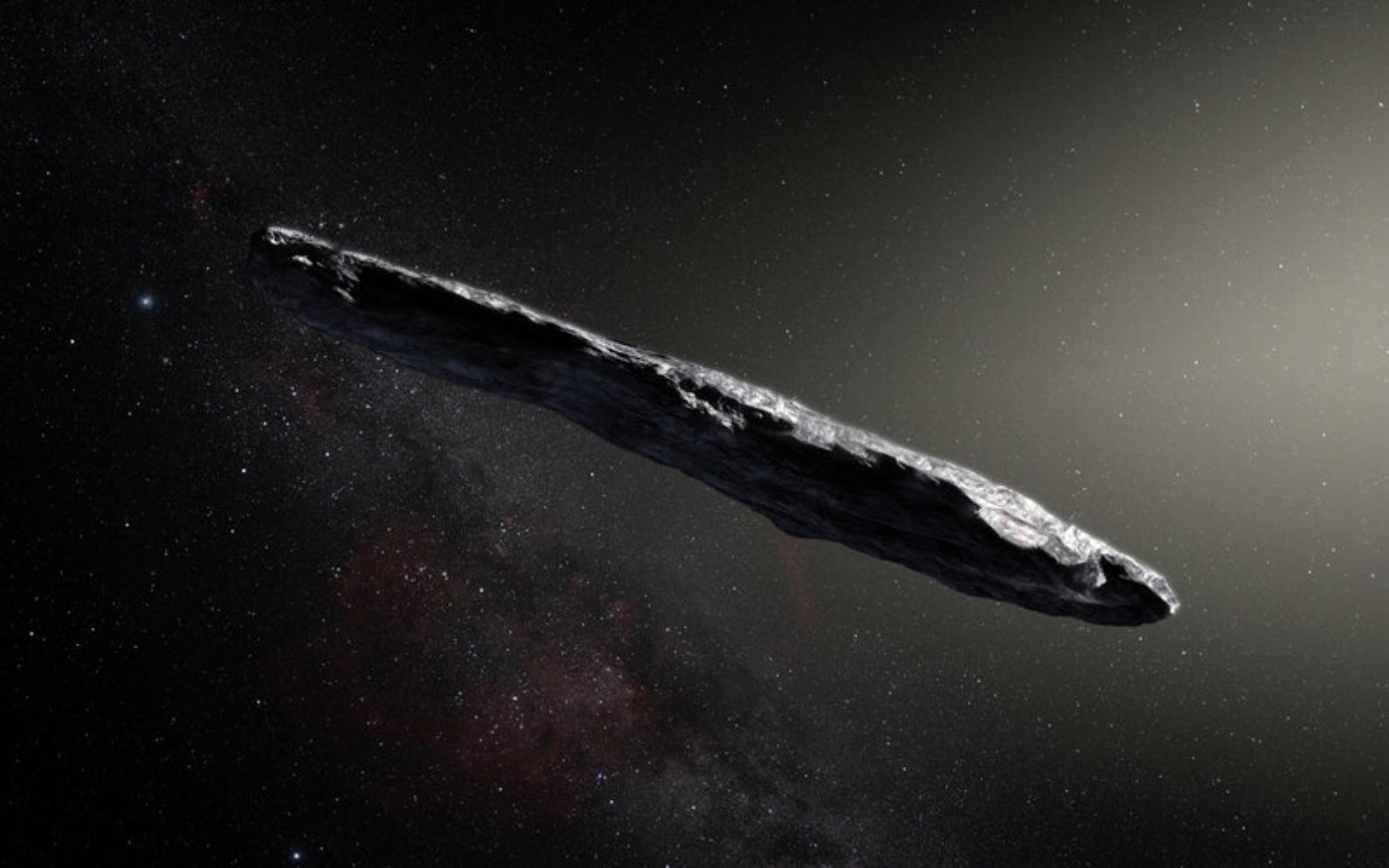Interstellar visitor 'Oumuamua could actually be a cosmic dust bunny

Ever since it floated through our cosmic neck of the woods, the interstellar visitor 'Oumuamua has intrigued and perplexed scientists. Now, a new theory has emerged that the cigar-shaped space rock might actually be a dust bunny.
Here on Earth, "dust bunnies" are clumps of accumulated dust and debris held together by static electricity that float around under furniture, pushed by passing breezes. But, the scientists behind a new study suggest that 'Oumuamua, the first interstellar object ever spotted in our solar system, could be (basically) a scaled-up dust bunny.
The study, led by Jane Luu, an astronomer at the University of Oslo in Norway, suggests that the interstellar space rock could have formed from dust blown off the nucleus of a comet outside of our solar system. This rock, an accumulation of rock and dust from the comet, would be pushed through space by solar radiation and eventually take a short tour of our solar system.
Related: 'Oumuamua: Solar system's 1st interstellar visitor explained in photos
After scientists discovered 'Oumuamua in 2017, they formulated a myriad of theories about what the object might be, how it could have formed and how it is traveling so fast through space. Theories surrounding the object had to take into account 'Oumuamua's strange, cigar-like shape and its high speed, at around 57,000 mph (92,000 kph).
Researchers have proposed that perhaps the object is solid hydrogen that, as the rock nears a star, turns to gas and propels 'Oumuamua onward. Some scientists suggested that perhaps the object, which appeared to be cigar-shaped, was actually more disk-like in reality. Still others wondered whether the rock could be an alien light sail built by an intelligent alien species.
In the new research, Luu and her team suggested that a large chunk of rock may have once broken off the comet's nucleus and, as dust and gas particles flowed away from the nucleus, they would attach themselves to the rocky fragment, eventually forming 'Oumuamua. Over time as the fragment grew larger, the gas flowing away from the comet would eventually push the dusty rock out into space.
Get the world’s most fascinating discoveries delivered straight to your inbox.
The scientists suspect the original comet was a "long-period" comet, which take a long time to circle their stars and travel quite far away from them. Because of the comet's weak gravity the pressure of radiation, the researchers think that the object separated from its parent comet on a trajectory into interstellar space, eventually leading it on a brief detour through our solar system.
Luu thinks that with sky survey technologies like the telescope Pan-STARRS 1 (Panoramic Survey Telescope and Rapid Response System), which first spotted 'Oumuamua in 2017, we will start to see more and more interstellar interlopers like 'Oumuamua, according to a statement. The Pan-STARRS 1 telescope in Hawaii, nestled high atop the summit of Maui's Haleakala volcano, is a space-rock hunting powerhouse that can see extremely faint objects like 'Oumuamua.
Observing new interstellar travelers is vital, as the fast pace of 'Oumuamua means scientists were only able to observe it in our solar system for a few weeks. By spotting new objects, scientists could also see whether they formed in the way that Luu's team proposed in the new research on 'Oumuamua.
This work was published on Sept. 4 in the Astrophysical Journal Letters.
Email Chelsea Gohd at cgohd@space.com or follow her on Twitter @chelsea_gohd. Follow us on Twitter @Spacedotcom and on Facebook.
Chelsea Gohd joined Space.com as an intern in the summer of 2018 and returned as a Staff Writer in 2019. After receiving a B.S. in Public Health, she worked as a science communicator at the American Museum of Natural History. Chelsea has written for publications including Scientific American, Discover Magazine Blog, Astronomy Magazine, Live Science, All That is Interesting, AMNH Microbe Mondays blog, The Daily Targum and Roaring Earth. When not writing, reading or following the latest space and science discoveries, Chelsea is writing music, singing, playing guitar and performing with her band Foxanne (@foxannemusic). You can follow her on Twitter @chelsea_gohd.



